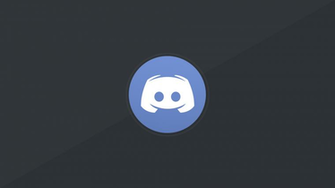The Ultimate Guide to Setting Up Your First Discord Server
The Ultimate Guide to Setting Up Your First Discord Server
Blog Article

Setting up your first Discord server can be an exciting journey into the world of online communities. Whether you want to create a space for gaming, studying, or just hanging out with friends, Discord servers provide a versatile platform for connecting with others. With over 150 million users, Discord has rapidly grown in popularity, making it a prime choice for anyone looking to build a community or facilitate discussions.
In this guide, we will walk you through the essential steps to create your very own Discord server from scratch. You will learn how to set it up, customize it to fit your vision, and effectively manage it to keep your members engaged. Getting started might seem a bit overwhelming at first, but with the right guidance, you will be able to build a thriving community that reflects your interests and connects people from all walks of life. Get ready to dive into the world of Discord servers and watch your community come to life.
Choosing Your Server Settings
When setting up your Discord server, the first step is to determine your server's purpose. Are you creating a community for gaming, study groups, or just a place for friends to hang out? Understanding your server's focus will guide your decisions on settings, channels, and roles. Tailoring the server to match its intended use will enhance member engagement and interaction.
Next, you will want to configure your server settings to ensure a positive and secure environment. This includes setting up moderation options such as verification levels and explicit content filters. Adjusting these settings appropriately can help manage user behavior and protect your community from unwanted content. Make sure to familiarize yourself with the various administrative tools Discord offers to maintain control and ensure a smooth experience for all members.
Finally, consider customizing your server with specific roles and permissions. Creating unique roles for different types of members can enhance the organization of your server. You can allow certain roles to access exclusive channels, manage messages, or even kick members if necessary. This layered approach to permissions helps ensure that the right people have the right capabilities, fostering a productive and enjoyable space for conversation and collaboration.
Creating Channels and Roles
Creating channels and roles is essential for organizing your Discord server effectively. Channels serve as communication spaces where members can interact based on specific topics or activities. When setting up your server, start by establishing text channels for general discussions, announcements, and specific interests. You might also want to create voice channels for gaming or casual hangouts. Ensure that the channel names are clear and representative of their purpose, as this will help members navigate easily.
Roles play a crucial role in managing permissions and fostering community dynamics. By assigning roles, you can define what members can do within your server, such as sending messages, managing channels, or moderating discussions. Consider creating roles for different member categories, such as moderators, newcomers, and regular members. This hierarchy can help maintain order and encourage engagement, as members feel honored by their roles and responsibilities within the community.
Once you have established your channels and roles, it is important to communicate these structures to your members. Make a welcome channel that explains the purpose of each channel and outlines the roles available. This transparency helps ensure that everyone understands the layout of the server and knows who to turn to for assistance or guidance. Engaging with your community and gathering feedback will also allow you to adjust channels and roles as needed, creating a more dynamic and enjoyable experience for everyone involved.
Inviting Members and Managing Community
To start building your community, you need to invite members to your Discord server. Share your server's invite link on your social media platforms, gaming streams, or community forums relevant to your interests. Consider personal invitations to friends or colleagues who share the same passions. Engaging your existing connections can foster a welcoming environment that encourages new members to join.
Once you have members on your server, it's vital to establish clear guidelines to maintain a positive and enjoyable atmosphere. Create a rules channel outlining behavioral expectations, and encourage members to familiarize themselves with these guidelines. Actively moderate your server to enforce these rules, which will help prevent potential conflicts and ensure a respectful community.
Anime Community Discord Servers
To keep your community engaged, organize events and discussions that spark interest and participation. Regular activities, whether game nights, movie watch parties, or themed discussions, can strengthen connections among members. Additionally, utilize polls or feedback channels to gather input from your community about future activities, ensuring everyone feels included in the decision-making process.
Report this page